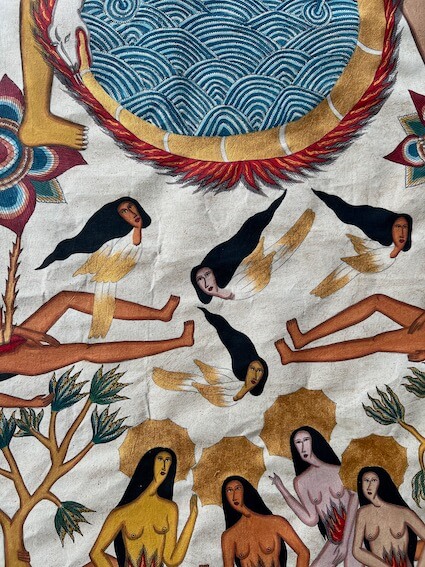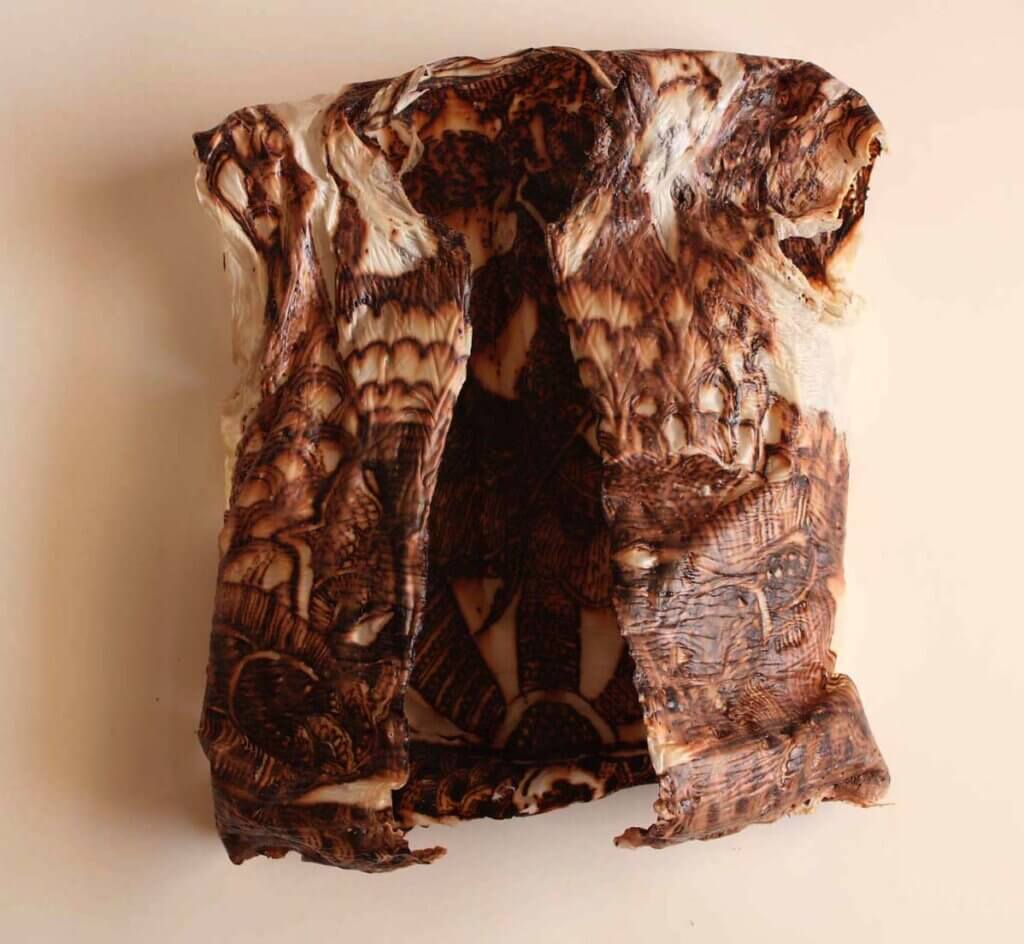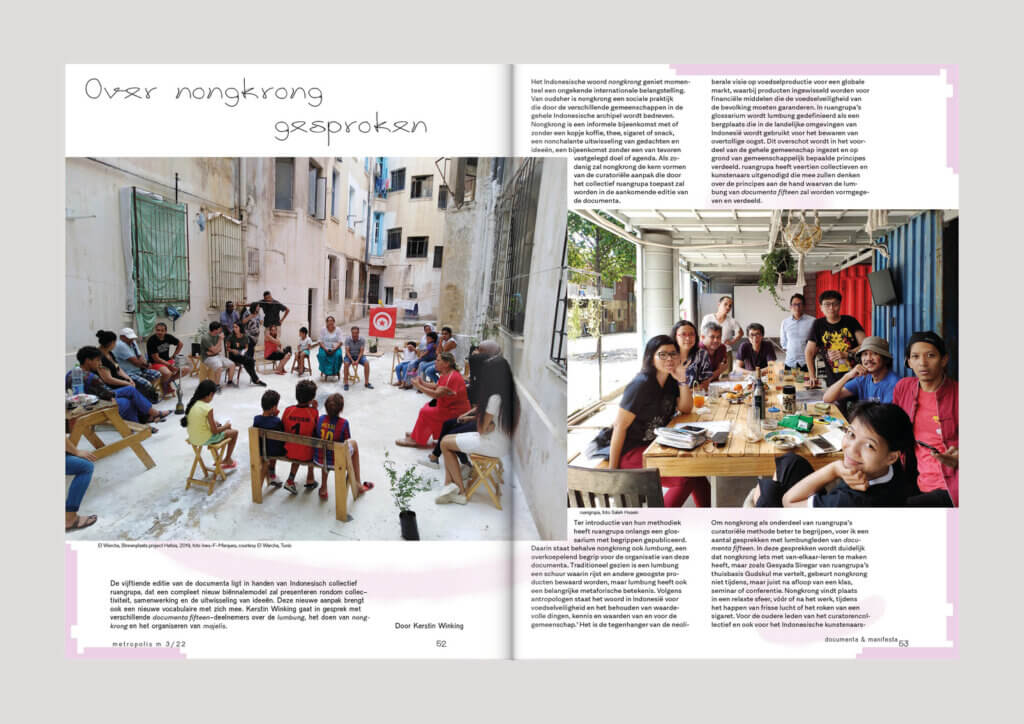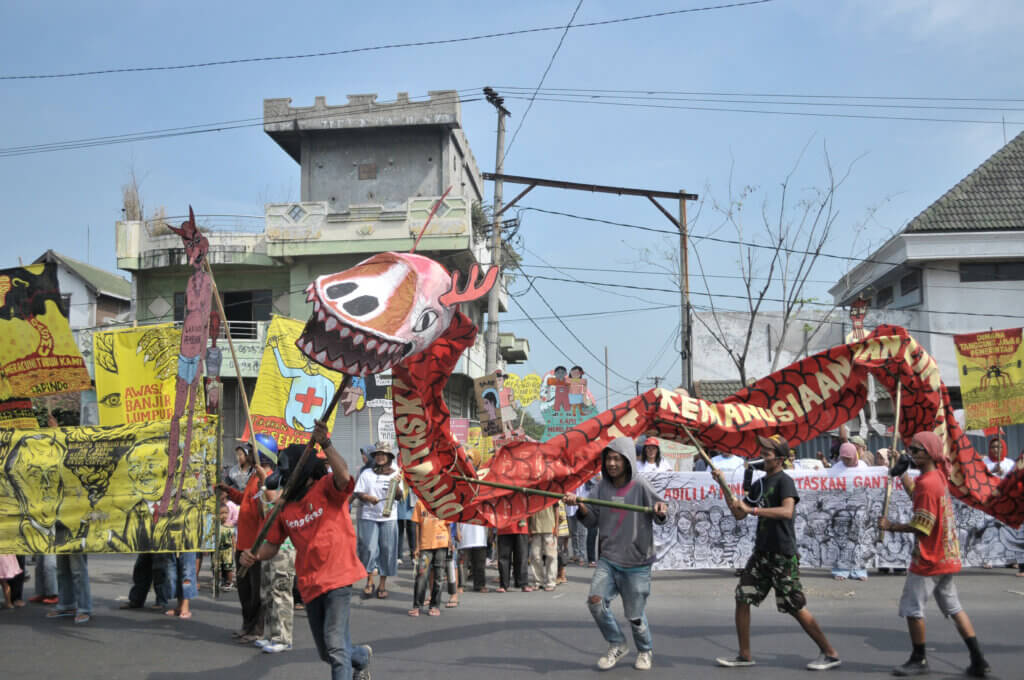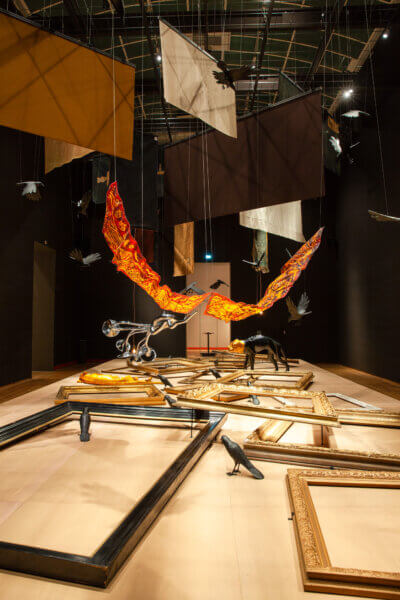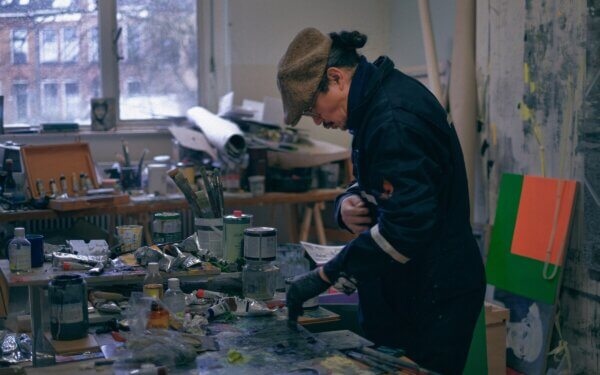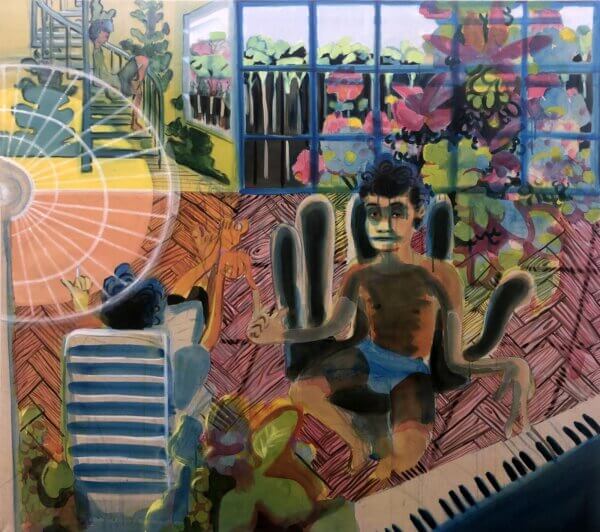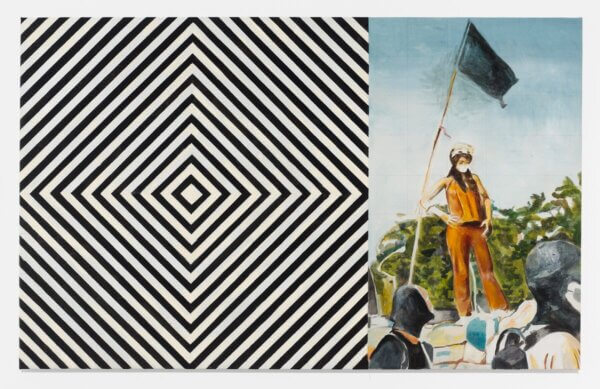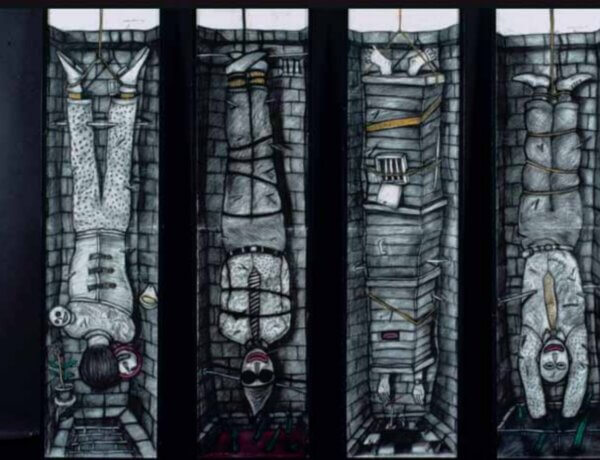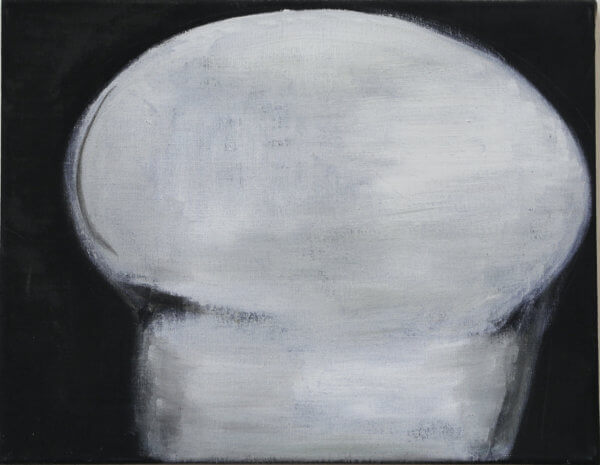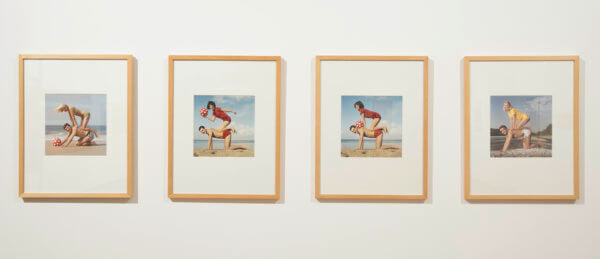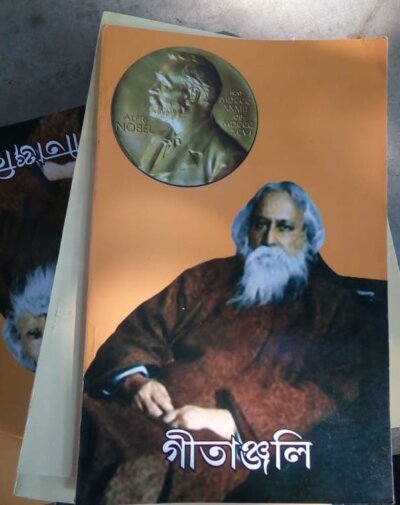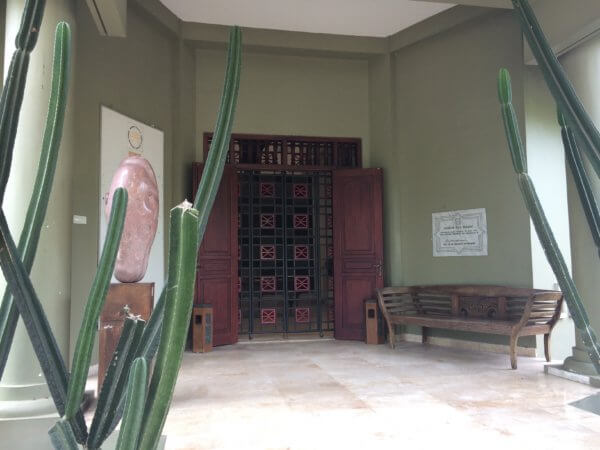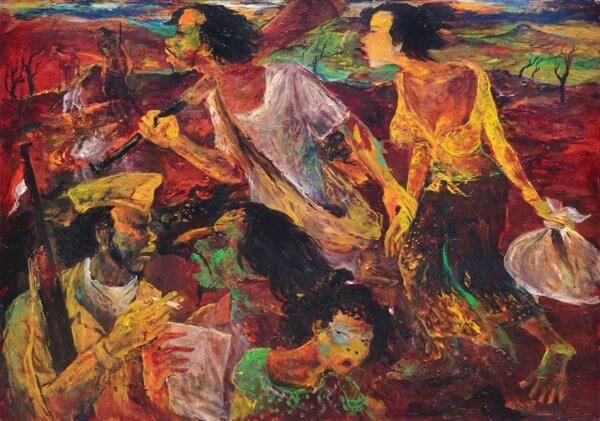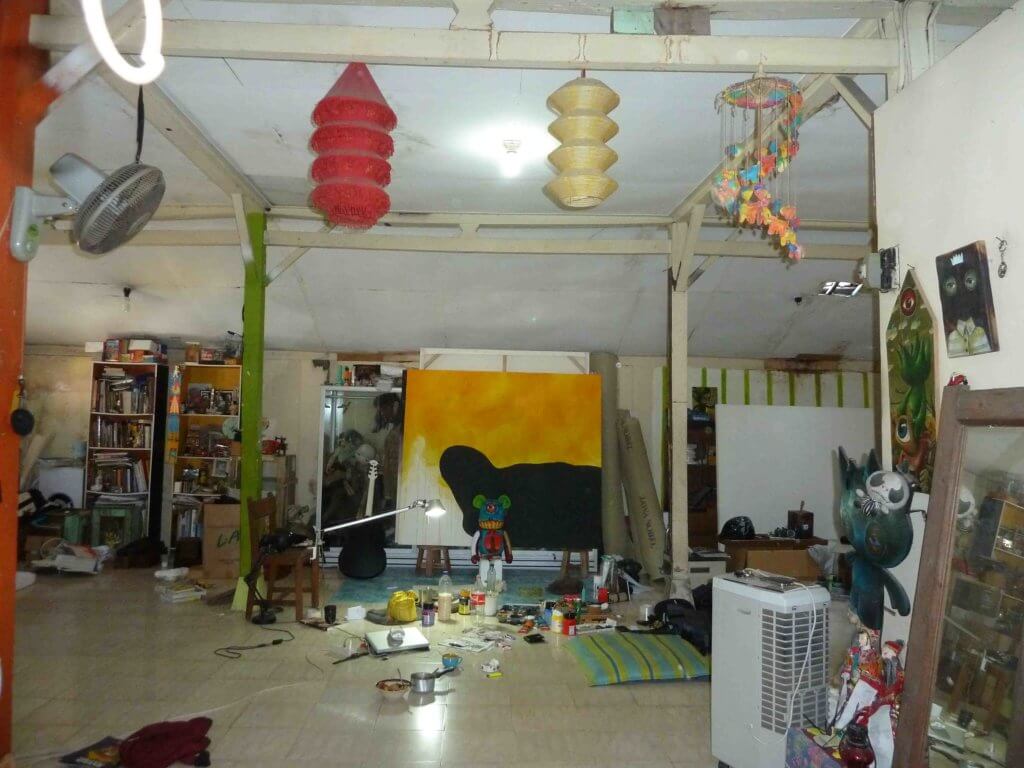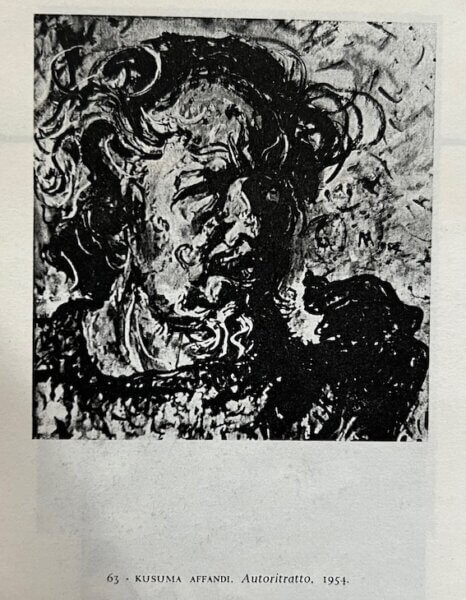
Essay: ‘Kunst met een grote of kleine i – Over de recente populariteit van inheemse kunst’
April 2024
Essay: ‘The Postcolonial Condition After Enwezor: Sharjah Art Foundation’s March Meeting Assesses a Curatorial Legacy’
July 2023
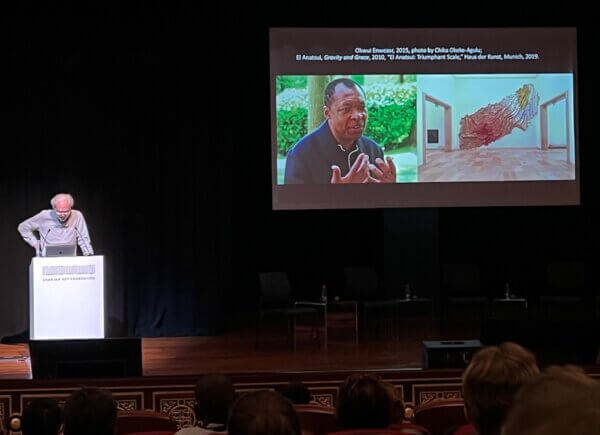
Opening the 15th edition of Sharjah Art Foundation’s annual March Meeting, art historian and critic Terry Smith spoke with a voice that resonated with grief. His keynote lecture “Renewing African Art Discourse within the Postcolonial Constellation” focused on the meteoric career of his dear friend, the late writer and curator Okwui Enwezor, who died in 2019 at the age of 55. His presence was evidently missed, not only by Smith but by many others in attendance at the three-day conference, titled “The Postcolonial Constellation: Art, Culture, Politics after 1960” (March 9-11).
Review: ‘Melati Suryodarmo – I’m a Ghost in My Own House at Bonnefanten’
August 2022

Melati Suryodarmo, Self Portrait (tryptich), 2018, digital C-print. Courtesy of the artist.
Article: ‘Amol K. Patil: Poetic Power’
July 2022
Article: ‘Taring Padi: Solidarity in Public Space’
May 2022
Review: ‘Revolusi! Indonesia Independent’
May 2022
Installation view of Timoteus Anggawan Kusno’s Luka dan Bisa Kubawa Berlari (Wounds and venom I carry as I am running), 2022, mixed-media installation, dimensions variable, at “Revolusi! Indonesia Independent,” Rijksmuseum, Amsterdam, 2022. Courtesy the artist and Rijksmuseum, Amsterdam.
Article: ‘The Paintings of Miko Veldkamp: Windows to a Cosmopolitan’s Memory and Imagination’
February 2022
Interview: ‘About Aasivissuit: Five Questions for Jasper Coppes’
June 2020
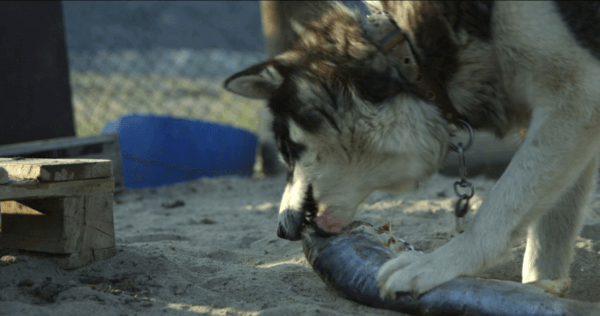
Article: ‘Fighting Colonial Claims to Power’
June 2018
Agus Djaya and Otto Djaya in Amsterdam 1947-1950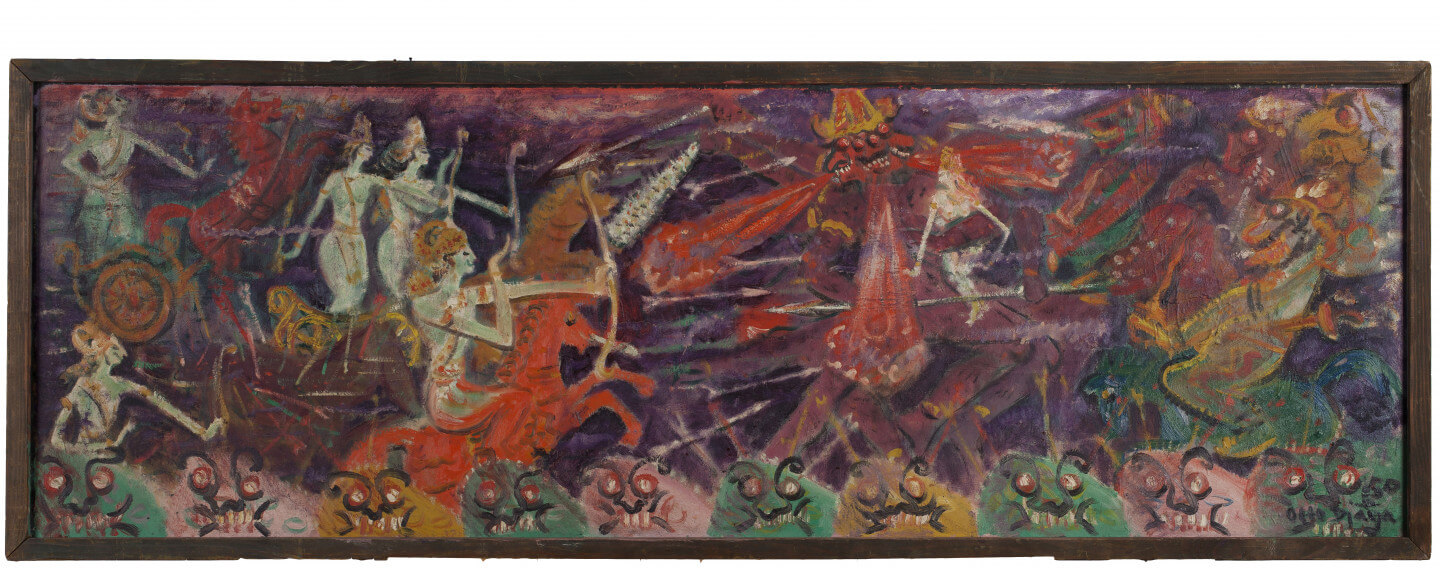
Article: ‘Meeting Oei Hong Djien in Magelang’
November 2017
Artist Profile: ‘Yin-Ju Chen – Arcane Analyses’
September 2016
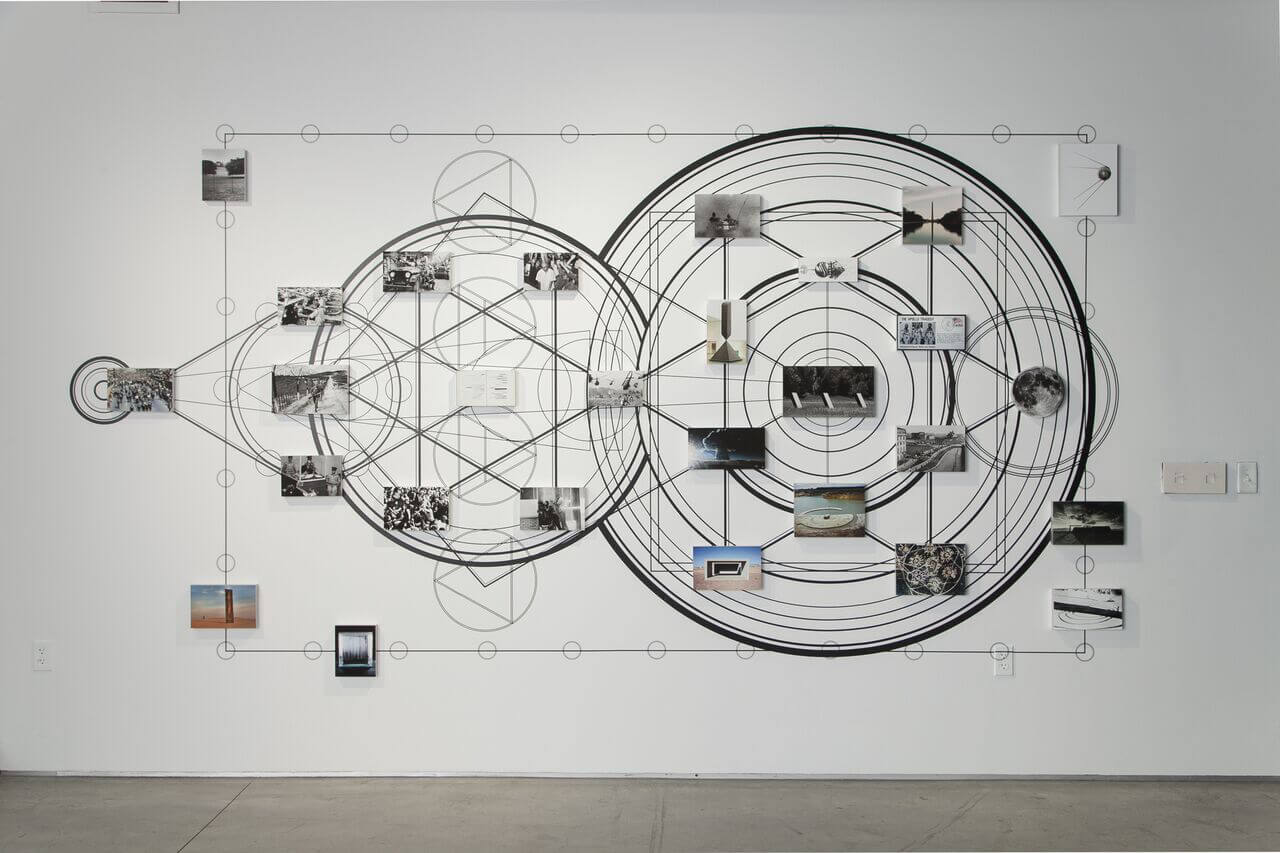
Yin-Ju Chen researches the forces behind what we desire and looks for answers in astrology, science, pseudoscience, mythology and philosophy. Read more..
Artist Profile: ‘Pallavi Paul – Screen Studies’
July 2016
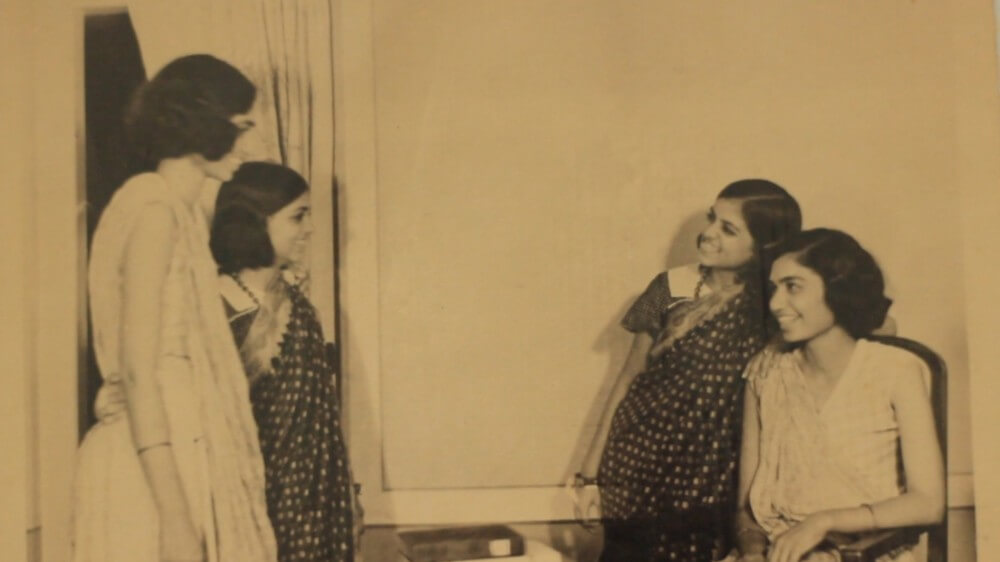
The heat was almost paralyzing on the day I first met Pallavi Paul in the gardens of the Crafts Museum in New Delhi, about two years ago. Seemingly unaffected, she was full of energy and immediately delved into film theory, history and space travel—all passions that inform her video-art practice. Read more..
Article: ‘Het ruangrupa netwerk – Voor een sociaal, activerend en begripsvol Sonsbeek’
July 2016
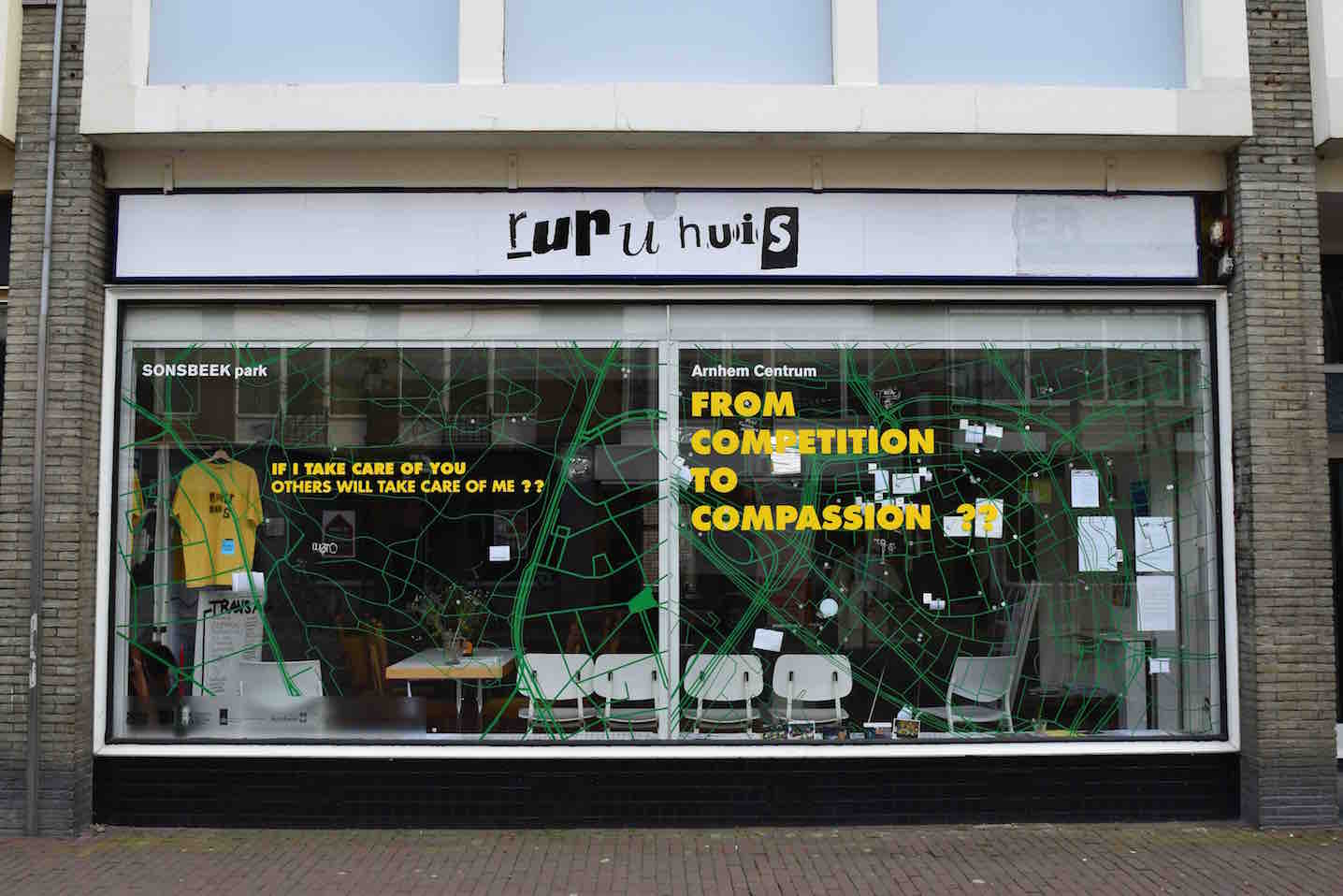
Enkele maanden geleden fietste Jan Willem Westendorp door Arnhem tot hij plotseling een oproep zag die hem aansprak: ‘From competition to compassion’. Read more..
Review: ‘A New Big Museum of Modern Art’
May 2016

Recently the San Francisco Museum of Modern Art reopened after a period of renovation and expansion lasting about three years, adding almost three times as much exhibition space to its former building and making it one of the biggest museums for modern art in the USA.
Review: ‘After Party in Shanghai’
January 2016
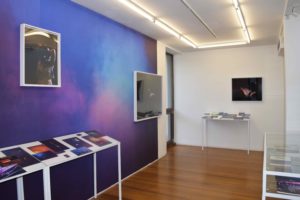
‘Do you go out a lot?’ This is one of the banal but frequently asked questions that people in their late-20s or 30s pose when we casually meet each other for the first time. Read more..
Interview with Amol K Patil: ‘About Sweep Walking’
December 2015
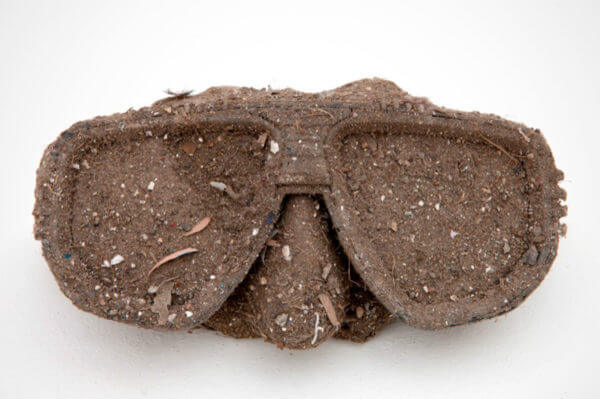
The work Amol Kisan Patil contributed to the Kamarado exhibition finds its basis in his long-term research project about Indian middle class life. Like most of the middle class people in India, Patil grew up in a chawl; the 4-5 story houses that were built in Mumbai to host workers in the 1900s. The living conditions in the chawls are extremely tough and the stories about them reveal that a middle class income in India does not protect people from living under precarious conditions, with large numbers of people in small rooms vested with parasites, no running water, and open gutters between the houses. The people who live here are for instance employed as office clerks. Each day the clerk’s offices are cleaned by sweepers and for this part of his research project, Patil decided to become a sweeper. On first sight, Sweep Walking – which, as a work of art is grounded in the tradition of Indian performance art – looks playful and much more cheerful than one would expect.
Read more..
Review: ‘Prospect.3 – Notes for Now’
December 2014
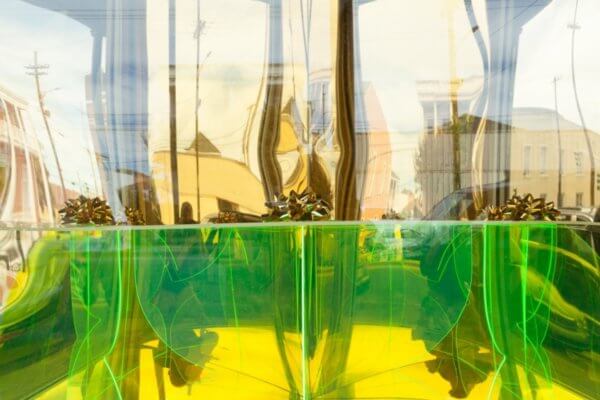 ‘Anything could happen here because – Because nothing’s happening here right now?’ reads the text on one of Lisa Sigal’s archival digital prints from the series Home Court Crawl (2014). The phrase, transposed over an image of a vacant house, captures the New Orleans spirit pretty well.
‘Anything could happen here because – Because nothing’s happening here right now?’ reads the text on one of Lisa Sigal’s archival digital prints from the series Home Court Crawl (2014). The phrase, transposed over an image of a vacant house, captures the New Orleans spirit pretty well.
Travelogue: ‘Road Trip to Crow’s Shadow’
November 2014

It was rainy and cold the morning I went on my four-hour drive from Boise, the capital of Idaho, to the printmaking institute Crow’s Shadow on the Umatilla Reservation in Oregon. Clouds hung over the tops of the Blue Mountains and raindrops covered my windscreen with a sheet of Pacific Northwest rain. The radio was playing Mac Demarco’s Salad Days and the wipers weren’t doing their job well. Read more..
Travelogue: ‘April 2014 in India’
June 2014
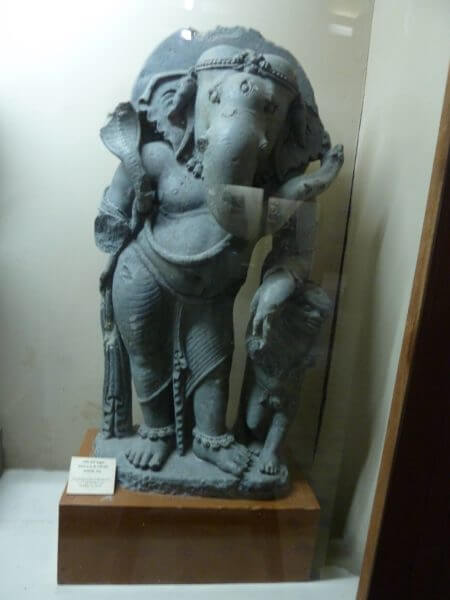
At the beginning of April, 2014, I went on a three-week research trip to India. On the first part of the journey, I travelled with Jelle Bouwhuis to New Delhi, Baroda and Bombay. On the second part, I went to Bengaluru, Kolkata and again to Delhi.
Book: Project 1975 – Contemporary Art and the Postcolonial Unconscious
January 2014
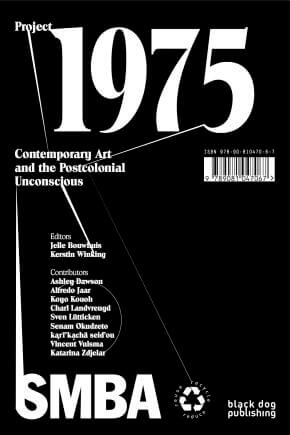
Project 1975 started as a two-year program of Stedelijk Museum Bureau Amsterdam. The project was set on exploring the relationship between contemporary art and postcoloniality, which gains more and more relevance to artists and thinkers in a context of a globalizing art world. Read more..
Travelogue: ‘In Indonesia with KUNCI’
October 2013
Interview with Apichatpong Weerasethakul: ‘A Dream Is Like Another Life Recurring’
June 2013
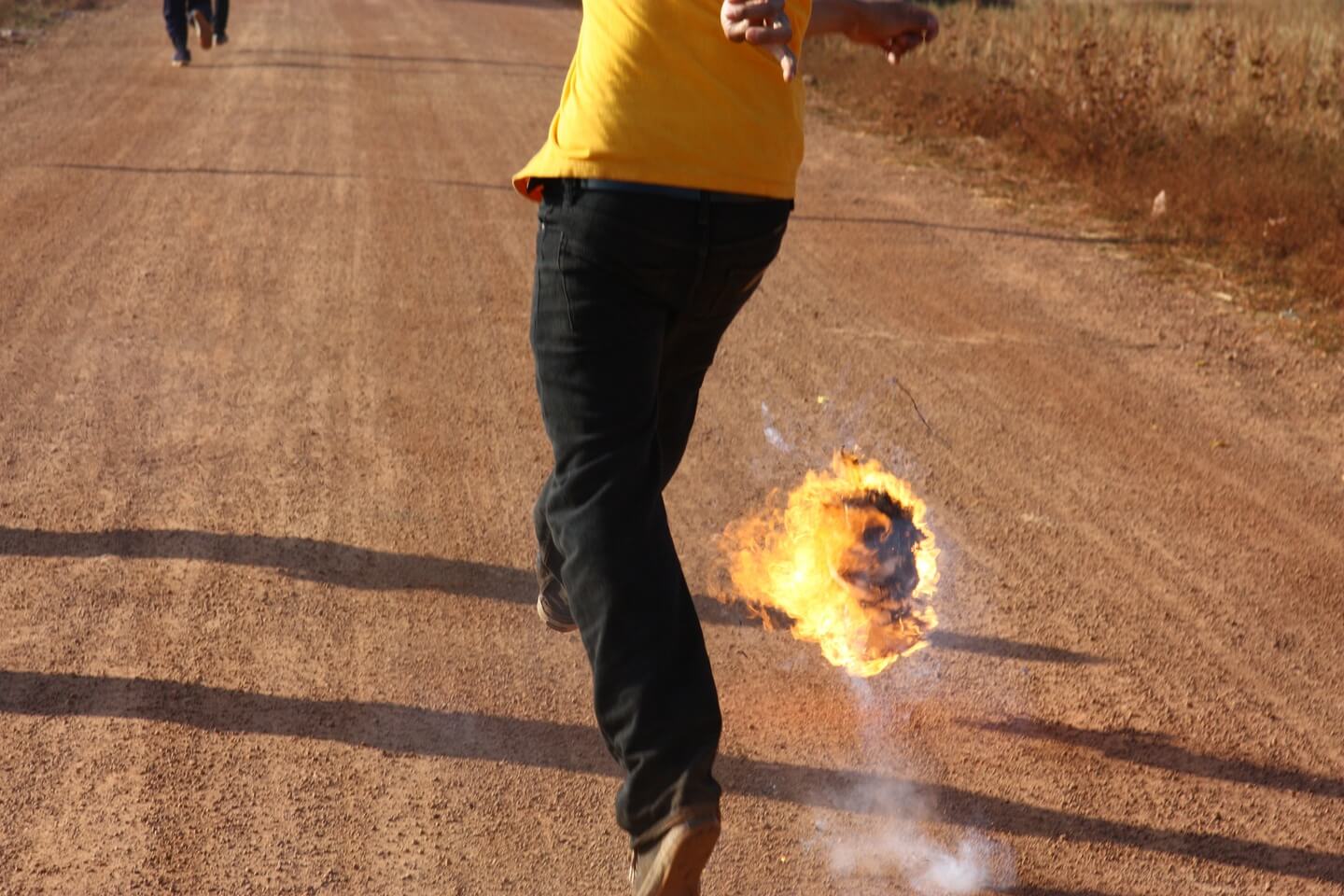
With his Primitive exhibition Apichatpong Weerasethakul ties into a long-standing tradition of artistic involvement with the notion of the primitive. His work is among those artists’ practices that motivate a reactivation of the discourse about the primitive in relation to contemporary art and geopolitical contexts. Read more..
Review: ‘The Global Contemporary: Art Worlds After 1989’
September 2012
‘The Global Contemporary: Art Worlds After 1989’, curated by Hans Belting, Andrea Buddensieg and Peter Weibel for the ZKM Museum of Contemporary Art in Karlsruhe, gave an overview of what the curators considered to be global art. In order to disclaim the proposition that art is an exclusively Western affair, the exhibition showed that artists from all over the world now contest […]
Read more...
Review: ‘Bamako Encounters – The 8th African Photography Biennial’
February 2010
For one month, between November 7 and December 7, the 8th African Photography Biennial took place in Bamako, Mali’s dusty capital. In its early editions, the Biennial mostly presented Africa’s neglected history of photography. Over the course of time, however, it also developed into a platform for artists’ views on contemporary Africa. The Bamako Encounters, […]
Read more...
Article: ‘George Osodi – The Ethical Revolution’
January 2010
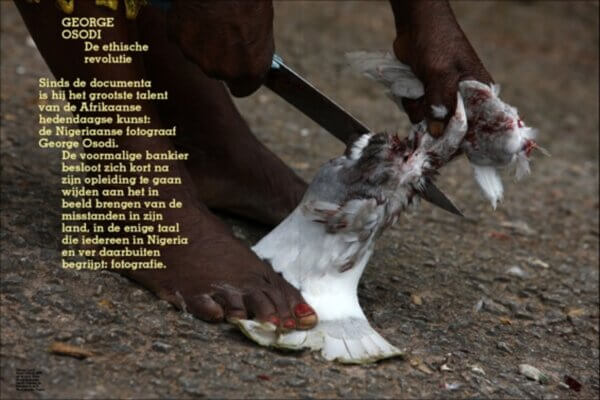
As this year’s Bamako Biennial demonstrates, photographic practice has become established in African culture and some African artists working with photography have developed a particular idiom which enables them to advance their causes. One of them is George Osodi, an artist who has taken the relation between Europe and Africa as a point of departure. Read more..
